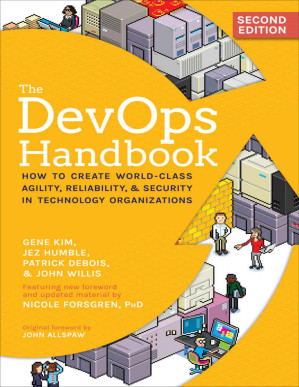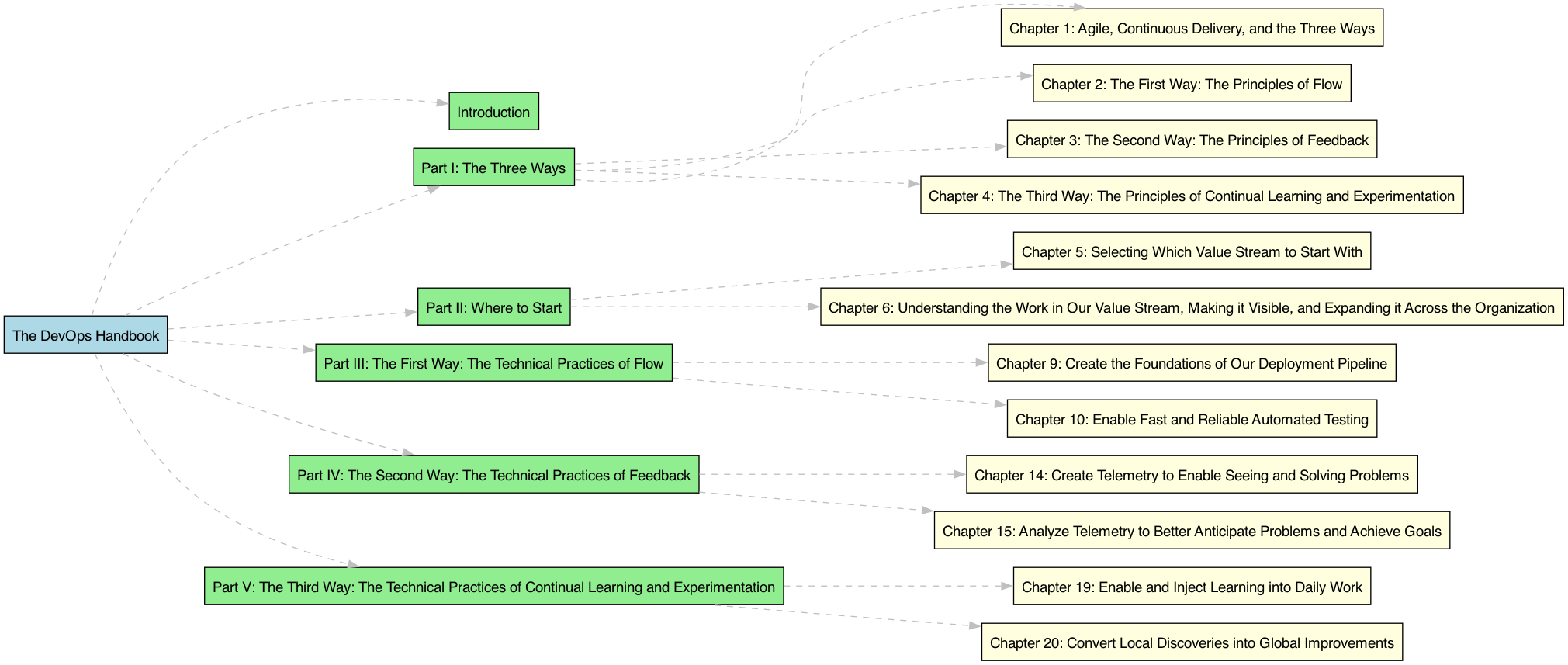Insights from The DevOps Handbook
In the rapidly evolving landscape of software development and IT operations, the principles of DevOps have become essential for organisations striving to enhance their productivity, efficiency, and overall business success. "The DevOps Handbook: Second Edition" by Gene Kim, Jez Humble, Patrick Debois, and John Willis offers a comprehensive guide to implementing DevOps practices. This book provides valuable insights into the principles, methodologies, and case studies that illustrate the transformative power of DevOps in modern enterprises.

Summary

Part I: The Three Ways
Chapter 1: Agile, Continuous Delivery, and the Three Ways
The authors introduce the foundational concepts of DevOps, emphasizing the importance of agile methodologies and continuous delivery. They present the Three Ways: Flow, Feedback, and Continual Learning and Experimentation, which form the core of DevOps practices.
Chapter 2: The First Way: The Principles of Flow
This chapter explores the principles of flow, focusing on optimising the delivery pipeline to ensure smooth and fast delivery of work from development to operations and, ultimately, to the customer. The authors highlight the importance of reducing work in progress and increasing throughput.
Chapter 3: The Second Way: The Principles of Feedback
The second way emphasises the importance of creating feedback loops at all stages of the development process. This allows teams to detect and address issues early, leading to higher quality and more reliable software.
Chapter 4: The Third Way: The Principles of Continual Learning and Experimentation
The authors discuss the third way, which promotes a culture of continuous learning and experimentation. This involves fostering a high-trust environment where teams can safely experiment, learn from failures, and continuously improve their processes.
Part II: Where to Start
Chapter 5: Selecting Which Value Stream to Start With
The authors guide readers on how to identify and select the most critical value stream to begin their DevOps transformation. They provide practical advice on prioritizing efforts and ensuring maximum impact.
Chapter 6: Understanding the Work in Our Value Stream, Making it Visible, and Expanding it Across the Organization
This chapter delves into techniques for mapping and visualising work within a value stream. The authors emphasize the importance of transparency and visibility in understanding bottlenecks and opportunities for improvement.
Part III: The First Way: The Technical Practices of Flow
Chapter 9: Create the Foundations of Our Deployment Pipeline
The authors explain how to establish a robust deployment pipeline, including the necessary tools and practices for automating and streamlining the deployment process.
Chapter 10: Enable Fast and Reliable Automated Testing
Automated testing is a critical component of DevOps. This chapter provides strategies for implementing effective automated testing to ensure the quality and reliability of software releases.
Part IV: The Second Way: The Technical Practices of Feedback
Chapter 14: Create Telemetry to Enable Seeing and Solving Problems
The authors discuss the importance of telemetry and monitoring in creating effective feedback loops. They provide practical examples of how to implement telemetry to detect and resolve issues quickly.
Chapter 15: Analyze Telemetry to Better Anticipate Problems and Achieve Goals
Building on the previous chapter, this section focuses on analyzing telemetry data to anticipate problems and make informed decisions that drive better outcomes.
Part V: The Third Way: The Technical Practices of Continual Learning and Experimentation
Chapter 19: Enable and Inject Learning into Daily Work
The authors emphasize the need to integrate learning into daily work routines. They discuss methods for creating a culture of continuous improvement and experimentation.
Chapter 20: Convert Local Discoveries into Global Improvements
This chapter provides strategies for scaling local discoveries and improvements across the entire organization, ensuring that successful practices are adopted universally.
Key Takeaways
- The Three Ways of DevOps: Emphasizing flow, feedback, and continual learning can significantly enhance the efficiency and effectiveness of software development and IT operations.
- Importance of Feedback Loops: Creating and leveraging feedback loops at all stages is crucial for detecting issues early and ensuring high-quality software.
- Continuous Improvement: Fostering a culture of continuous learning and experimentation drives innovation and long-term success.
- Automated Testing and Telemetry: Implementing robust automated testing and telemetry practices is essential for maintaining the reliability and stability of software releases.
Personal Reflections
Reading "The DevOps Handbook" has been incredibly insightful. The authors' practical approach to implementing DevOps principles and their emphasis on continuous improvement resonate deeply with my experiences. The detailed case studies and real-world examples provide valuable guidance for any organisation looking to adopt DevOps practices.
Conclusion
"The DevOps Handbook: Second Edition" by Gene Kim, Jez Humble, Patrick Debois, and John Willis is an essential resource for anyone involved in software development and IT operations. Its comprehensive coverage of DevOps principles, practical advice, and inspiring case studies make it a must-read for organisations aiming to enhance their productivity, quality, and overall business success through DevOps practices.